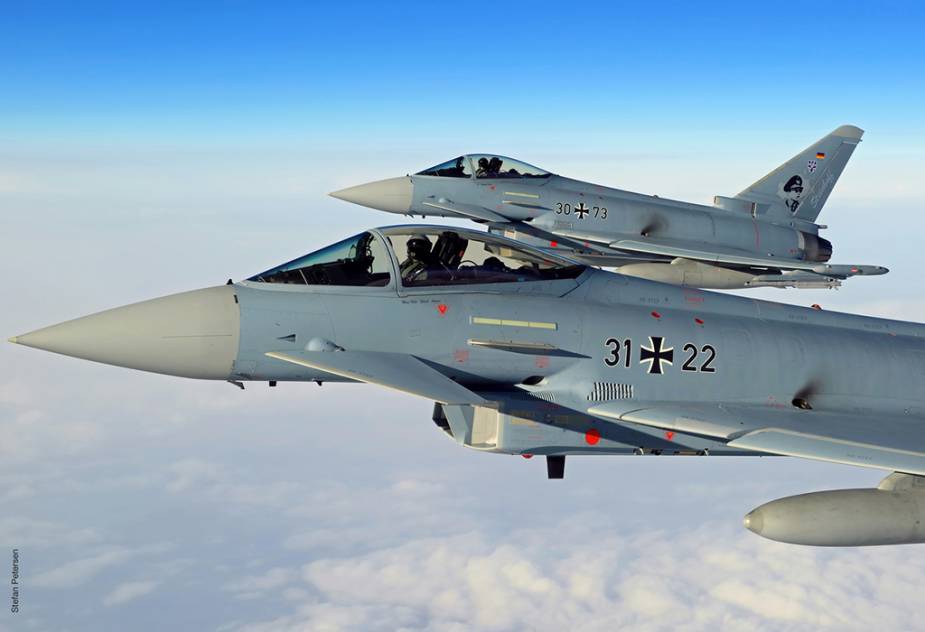Sensor solutions provider Hensoldt has achieved a technological leap in the development of products for the electronic protection of aircraft. By combining artificial intelligence, digitisation and Active Electronically Scanning Array (AESA) technologies, Hensoldt has developed a jamming system ("jammer") called 'Kalaetron Attack', which jams even the latest Russian radars, protecting aircraft against enemy air defence.
Follow Air Recognition on Google News at this link
 Hensoldt's 'Kalaetron Attack' provides the basis for the new electronic warfare capabilities of the Eurofighter. (Picture source: Hensoldt/Stefan Petersen)
Hensoldt's 'Kalaetron Attack' provides the basis for the new electronic warfare capabilities of the Eurofighter. (Picture source: Hensoldt/Stefan Petersen)
Kalaetron Attack has recently proven its effectiveness in current threat scenarios in extensive ground tests. It is part of Hensoldt's fully digital 'Kalaetron' product family, which is used in the NH90's self-protection system and for signals intelligence with the German Armed Forces, among others.
"The products of contemporary airborne electronic warfare are available in Germany," says Celia Pelaz, Chief Strategy Officer and Head of the Spectrum Dominance Division at Hensoldt. "At Hensoldt, we are bundling these capabilities in order to develop - if necessary, in cooperation with other companies - a solution under national sovereignty. By combining the latest technologies, we have managed to optimise the interference performance in a targeted manner. This makes 'Kalaetron Attack' scalable at any time for deployments as a self-protection system or the roles of an escort and stand-off jammer."
The core elements of the system are a fully digitised, broadband sensor and effector, an electronically controllable jammer and a condensed structure of the electronic components only made possible by metallic 3D printing. This has made it possible to configure the jammer in such a way that it can be easily integrated into pod formats commonly used worldwide and various flying platforms but can also be scaled for sea and land applications. The next development step planned for summer 2022 is to install it in an aircraft in order to confirm the already outstanding laboratory results in realistic flight tests.
Hensoldt is already involved in the production and further development of Eurofighter's self-protection system as part of the EuroDASS consortium.
















